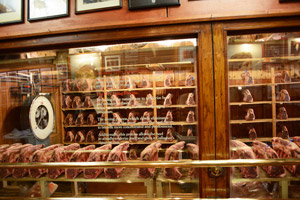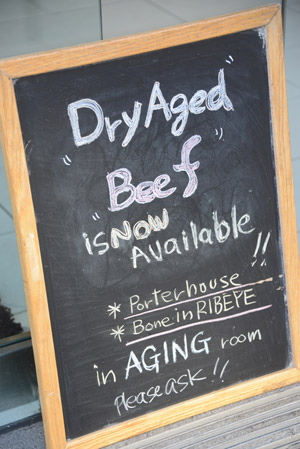

Aging around the world
The traditional method of aging, called dry aging in English-speaking countries where this meat is quite sought after, specifically for its intense flavour and incomparable tenderness, consists in keeping the meat in an environment in which the temperature is extremely well-controlled.
This temperature must be maintained with precision: too hot and the meat spoils, too cold and it freezes, thus bringing to a halt the aging process.
The humidity also needs to be stabilised in order to reduce loss of water in the meat. In addition to which constant ventilation must be maintained around the piece of meat.
And finally, as is often the case in delicate procedures, the eye of a professional butcher has to closely follow the evolution of the meat.
These requirements explain why aged meat has become a rarity: the need for a high quality richly marbled meat from the start, the loss of weight of the meat, the time required (20 to 90 days), the actual space required, temperature control, the management of pulsated air, the follow-up by professionals.
All of these requirements render this meat a rarity, because it is exceptional, and very few restaurants in the world are in a position today to serve genuine aged beef.

- THE HOUSE OF DENAUX
- OUR PRODUCTS
- Charolles AOC* beef – aged exclusively on our premises
- Irish Hereford Prime Beef – exclusive importer
- Red Label suckling veal
- The black pig of the Bigorre
- The black bottomed pig of the Limousin region
- Red Label Limousin pork
- Red Label Quercy lamb
- Milk-fed lamb of the Pyrenees
- Salt marsh AOC lamb of Mont Saint-Michel
- Authentic cold cuts
- High quality offal
- THE CUTS
- AGING
- THE GUARANTEES
- GASTRONOMY
- News
- Shop online
- Press review
- Contact / Schedule store
